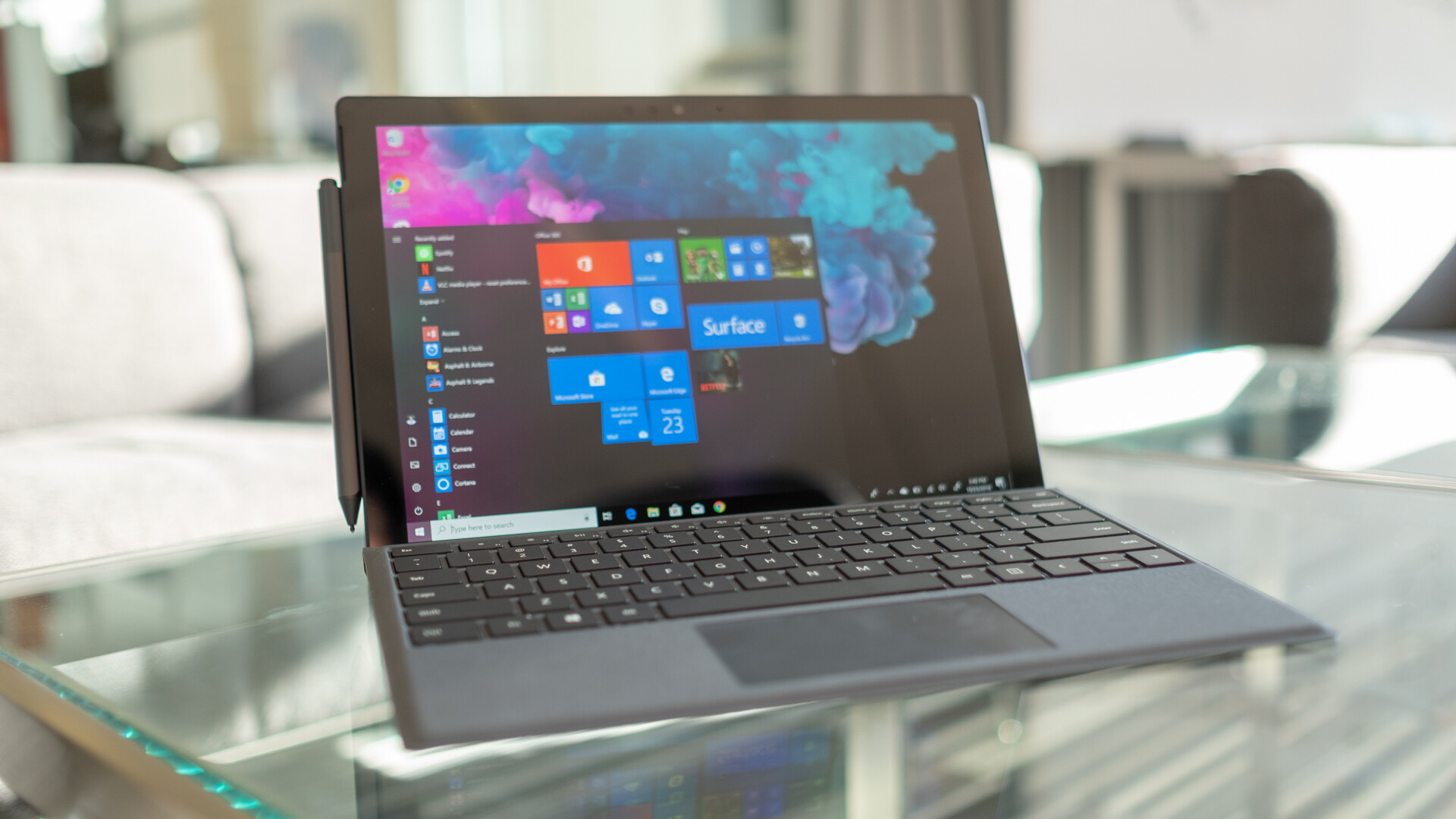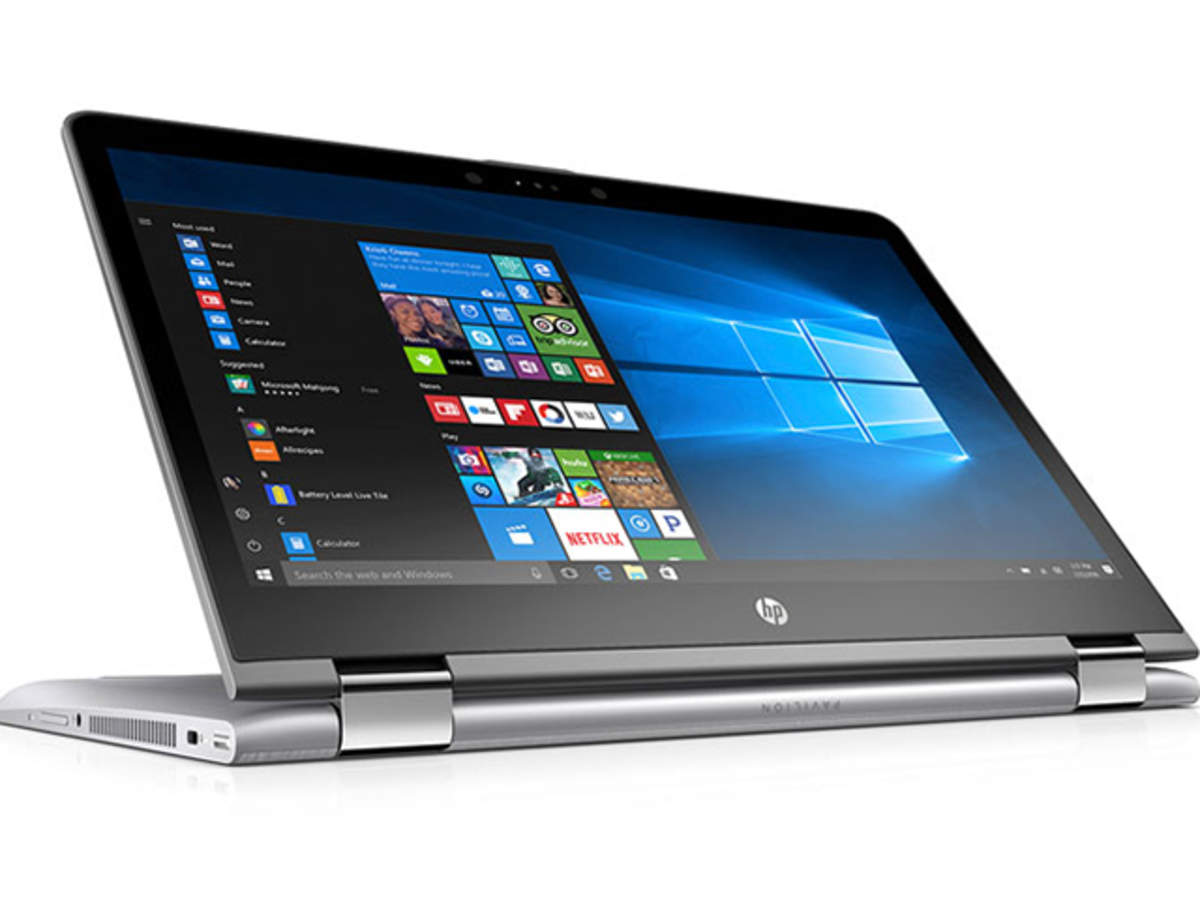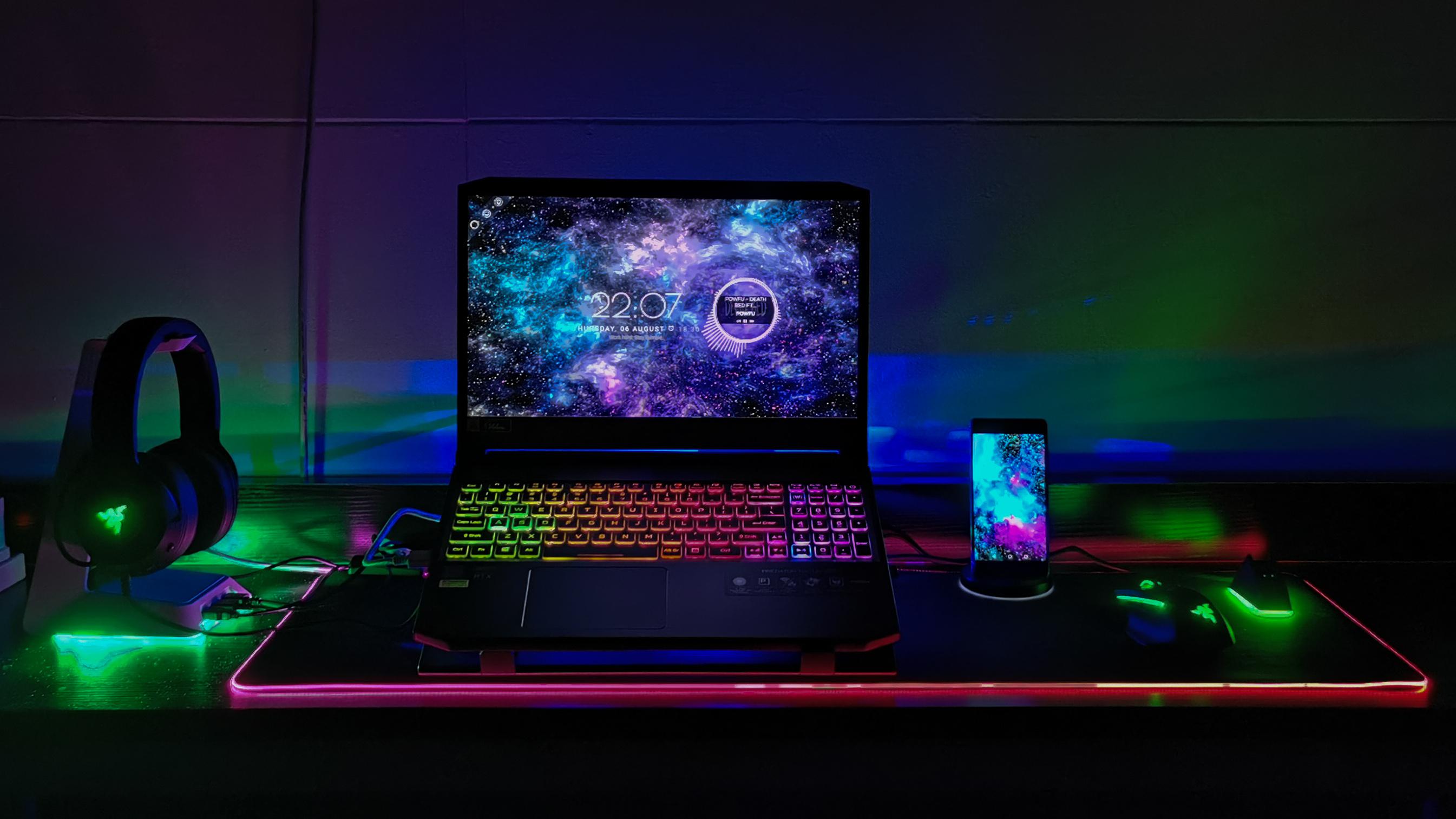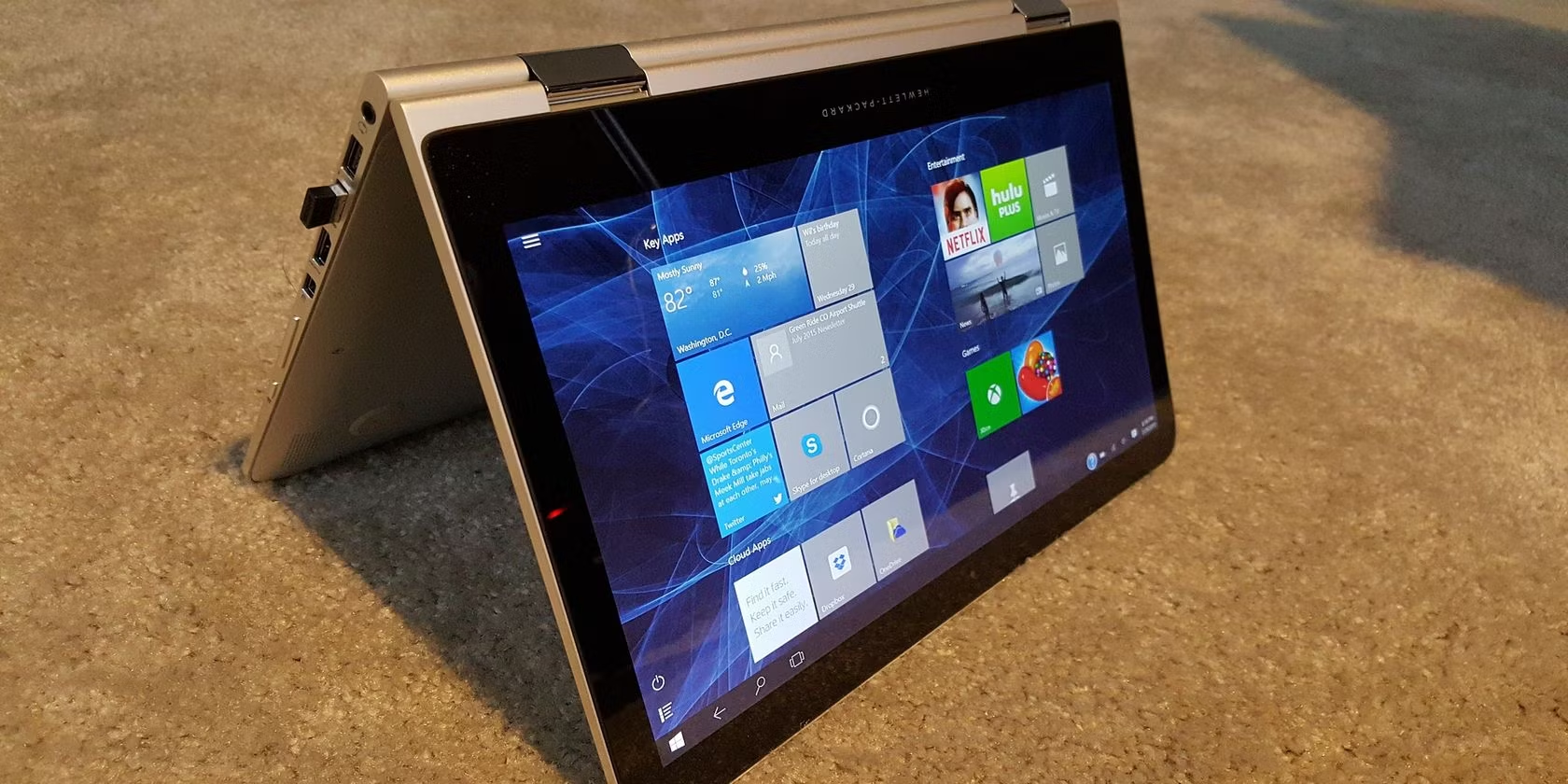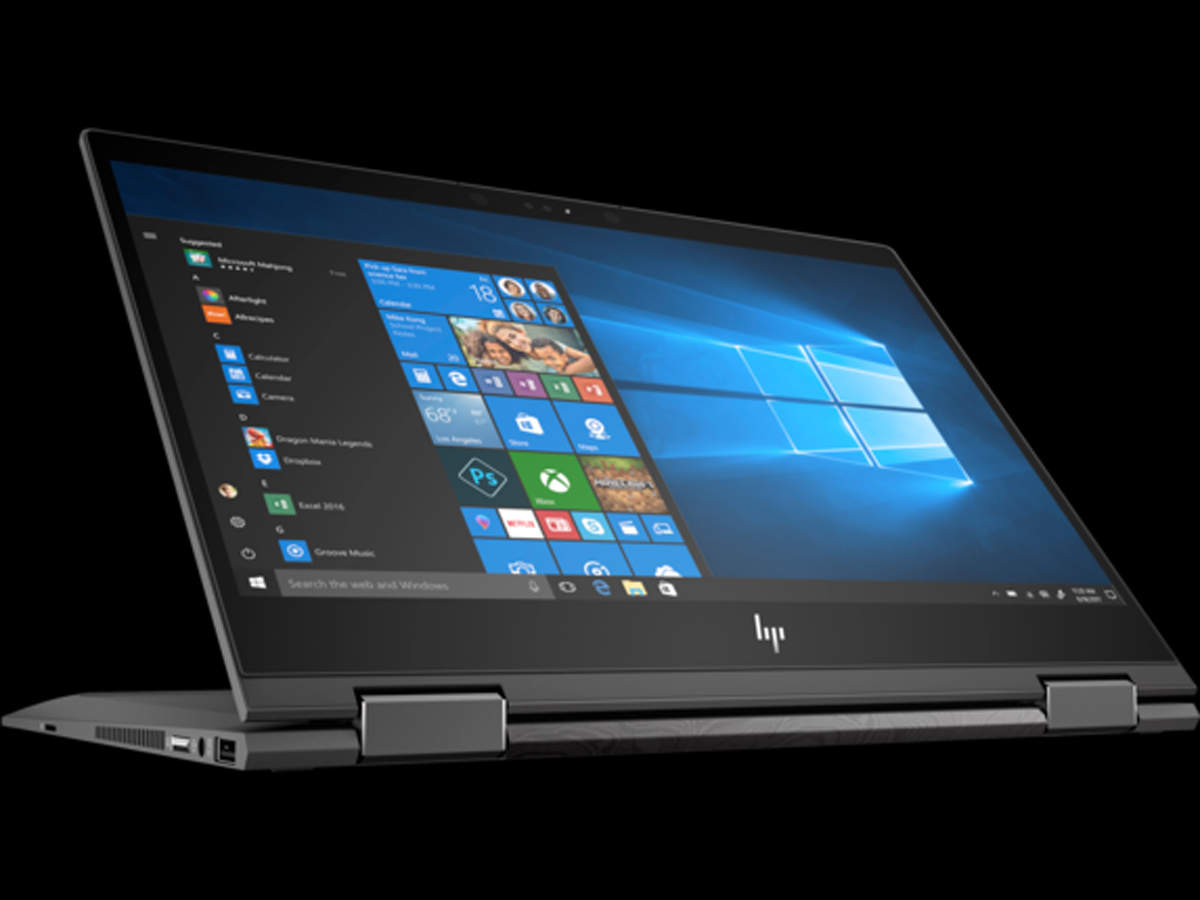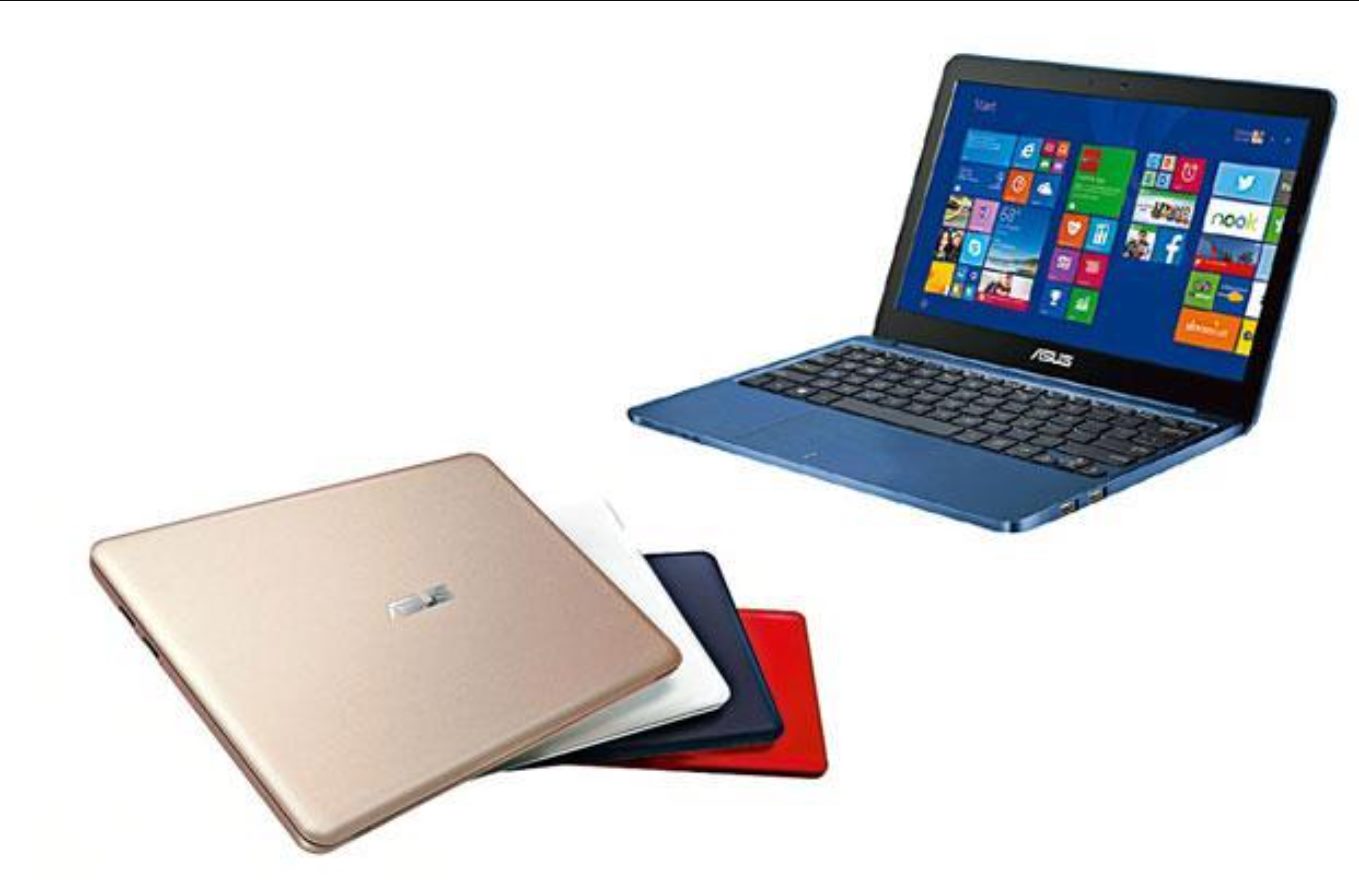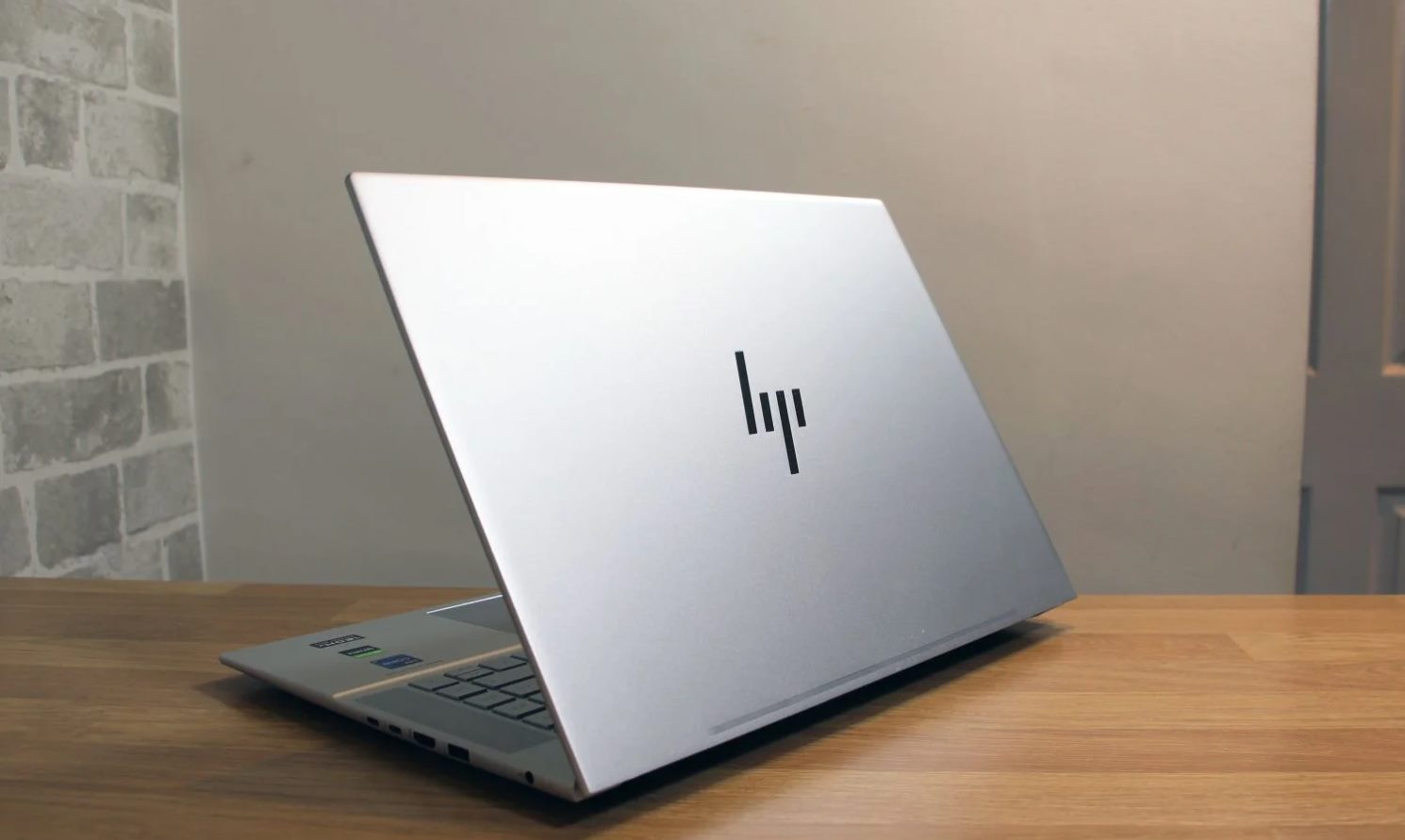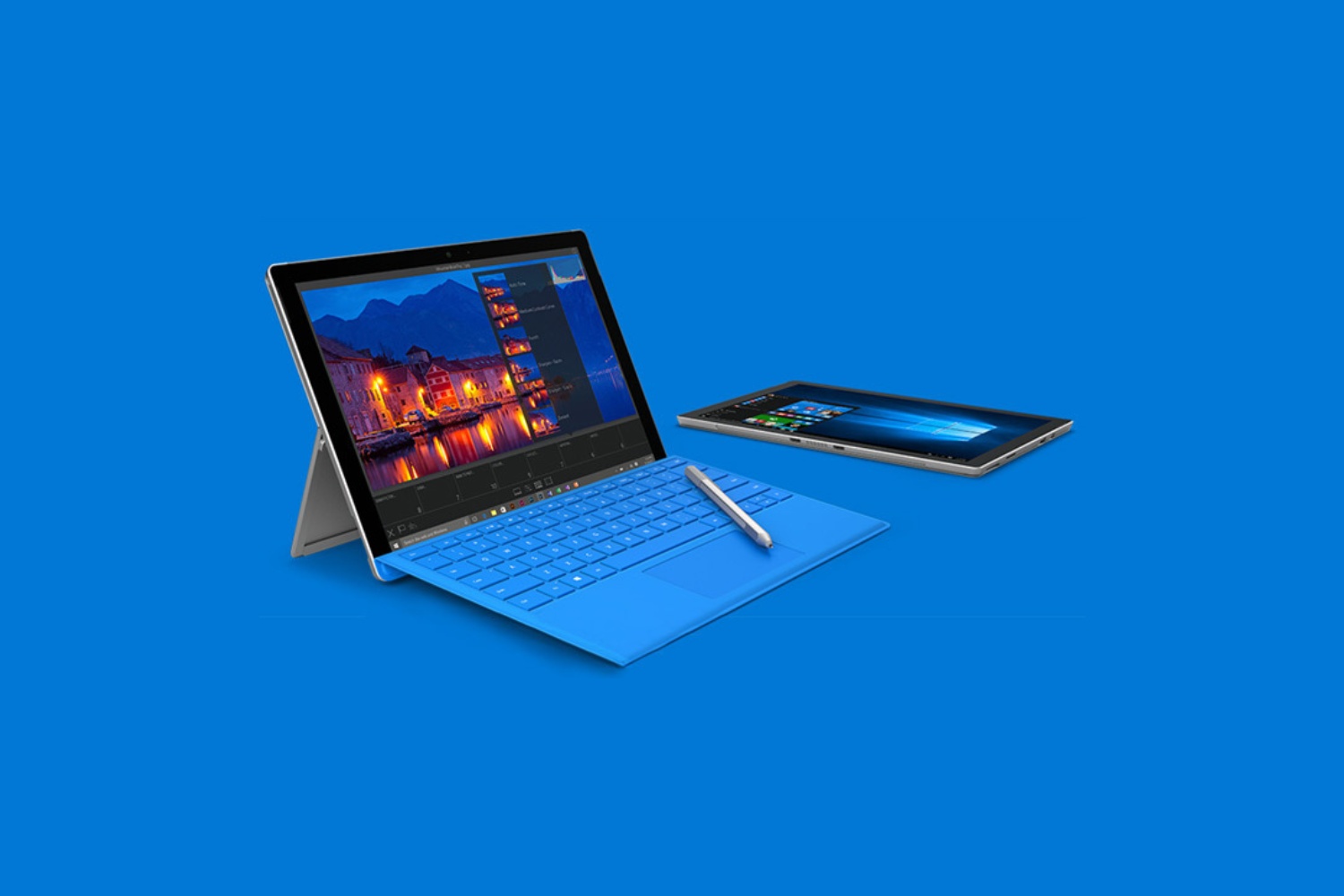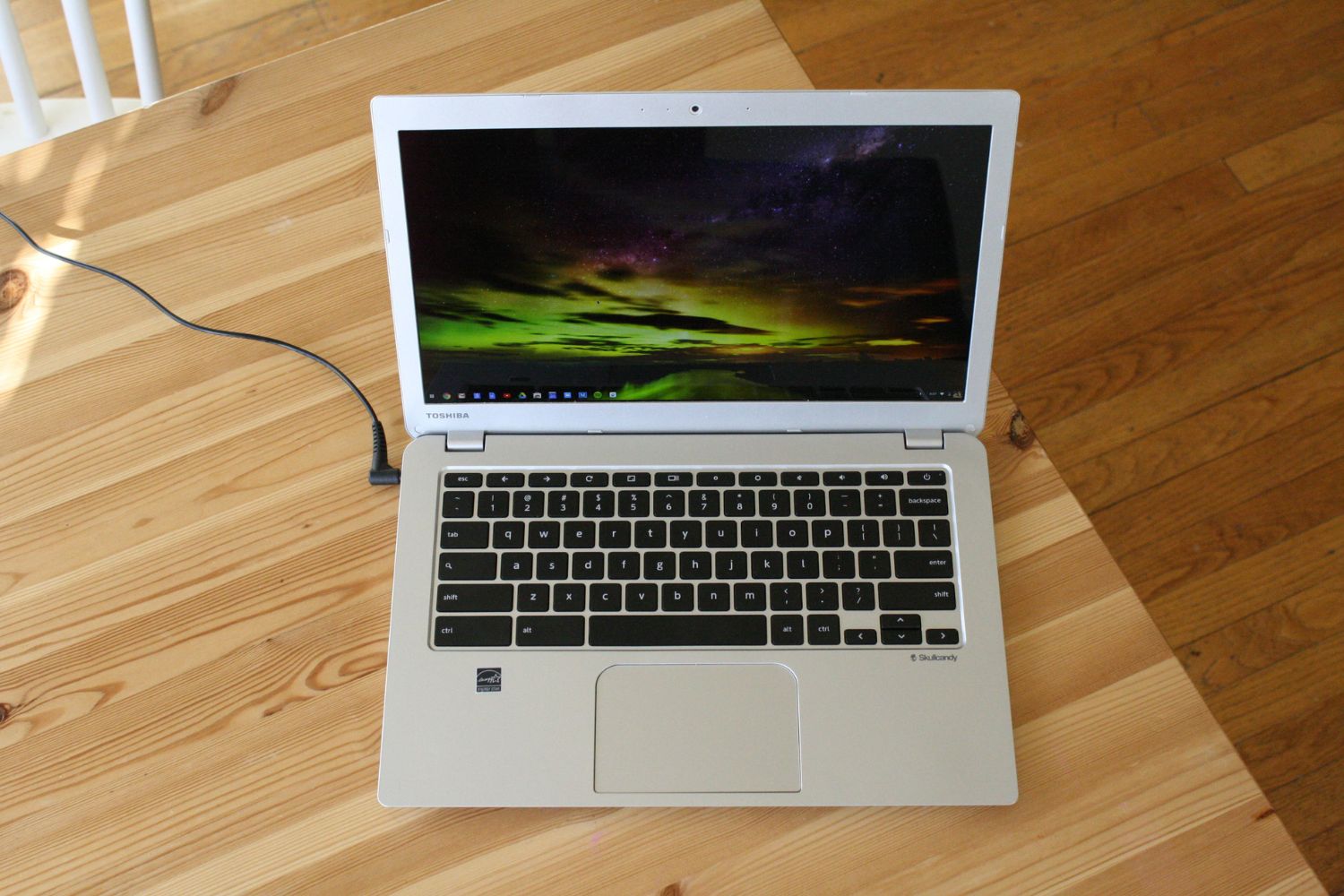Introduction
Tablet mode has become an increasingly popular feature in laptops, offering a versatile and immersive user experience. If you own an HP laptop, you’re in luck, as HP laptops come equipped with Tablet mode functionality. Whether you want to use your laptop as a tablet for optimal touch screen interaction or simply enhance your productivity by taking advantage of the tablet-like interface, Tablet mode on your HP laptop can transform your computing experience.
In this article, we will explore how to use Tablet mode on your HP laptop, including how to enable Tablet mode, navigate in Tablet mode, use touch gestures, switch between Tablet mode and Desktop mode, customize Tablet mode settings, and provide some tips and tricks for a seamless Tablet mode experience.
By the end of this article, you’ll have a comprehensive understanding of how to make the most of Tablet mode on your HP laptop and unlock its full potential. So, let’s dive in and discover the exciting world of Tablet mode on your HP laptop!
What is Tablet Mode?
Tablet mode is a feature that allows you to transform your HP laptop into a tablet-like experience. It optimizes the user interface for touch screen interaction, making it easier to navigate and use your laptop without a physical keyboard or mouse. Tablet mode rearranges the layout of icons, buttons, and menus to be more touch-friendly, providing a seamless transition from a traditional laptop experience to a tablet-like interface.
In Tablet mode, your HP laptop becomes a portable device that can be carried and used more comfortably, allowing you to take full advantage of the touch screen capabilities. This mode is particularly useful for activities like web browsing, reading eBooks, watching videos, and using touch-based apps. With Tablet mode, you can effortlessly interact with your laptop using gestures and touch gestures, enhancing your productivity and enjoyment.
Tablet mode also introduces a different way of navigating through the operating system. Instead of using a mouse or touchpad, you can use touch gestures, such as swiping, tapping, pinching, and dragging, to navigate between apps, access settings, and perform various actions. This intuitive and tactile approach to interacting with your HP laptop opens up a whole new world of possibilities and takes your computing experience to the next level.
It’s important to note that Tablet mode is not limited to HP laptops only. Many modern Windows-based laptops and devices have this functionality as a built-in feature. However, since we are focusing on HP laptops in this article, we will be exploring how to utilize Tablet mode specifically on HP laptops.
Now that we have a clear understanding of what Tablet mode is and what it offers, let’s move on to the next section and learn how to enable Tablet mode on your HP laptop.
Enabling Tablet Mode on Your HP Laptop
To begin using Tablet mode on your HP laptop, you first need to enable it. Enabling Tablet mode is a simple process on HP laptops, and it can be done using different methods. Let’s explore a few ways to enable Tablet mode:
- Using the Action Center:
One of the easiest ways to enable Tablet mode is through the Action Center. To access the Action Center, swipe in from the right edge of the screen or click on the Action Center icon in the taskbar. In the Action Center, you will find the Tablet mode toggle. Simply click on it to enable or disable Tablet mode.
- Using the Settings Menu:
Another way to enable Tablet mode is through the Settings menu. Press the Windows key + I to open the Settings menu and select the “System” option. From the left-hand side menu, click on “Tablet mode.” In the Tablet mode settings, you will see a toggle switch to turn on or off Tablet mode. Simply click on the toggle switch to enable Tablet mode.
- Using the Notifications Center:
You can also enable Tablet mode directly from the Notifications Center. Click on the Notifications icon in the taskbar to open the Notifications Center. Look for the “Tablet mode” option at the bottom of the Notifications Center. Click on it to enable or disable Tablet mode.
- Using the Start Menu:
Lastly, Tablet mode can be enabled through the Start menu. Click on the Start button in the taskbar to open the Start menu. From the Start menu, click on the “Settings” option, then select “System” and click on “Tablet mode.” In the Tablet mode settings, toggle the switch to enable or disable Tablet mode.
Once you have enabled Tablet mode on your HP laptop, the interface will switch to the tablet-like layout, where icons, buttons, and menus are optimized for touch interaction. Now that you have successfully enabled Tablet mode, let’s explore how to navigate in Tablet mode in the next section.
Navigating in Tablet Mode
Navigating in Tablet mode offers a more tactile and intuitive experience, allowing you to seamlessly interact with your HP laptop using touch gestures. Here are some key navigation points to keep in mind while using your HP laptop in Tablet mode:
- Swipe from the left: Swiping from the left edge of the screen brings up the Task View, which displays all open apps and allows you to switch between them.
- Swipe from the right: Swiping from the right edge of the screen opens the Action Center, where you can access quick settings, notifications, and other system functions.
- Swipe from the top: Swiping from the top edge of the screen reveals the app command bar, providing additional options and settings specific to the open app.
- Swipe from the bottom: Swiping from the bottom edge of the screen displays the app bar, showing app-specific controls and options.
- Swipe up from the bottom: Swiping up from the bottom of the screen brings up the Start screen, allowing you to access your apps and pinned tiles.
- Swipe down: Swiping down from the top edge of the screen or tapping the title bar of an app brings the app into windowed mode, where you can resize or move the app around.
- Virtual keyboard: In Tablet mode, the virtual keyboard automatically appears when you tap on a text field or when you select the keyboard icon in the taskbar. You can also swipe the keyboard down to minimize it if it’s not needed.
These touch gestures make navigating through apps, accessing settings, and switching between different functions effortless. Whether you’re browsing the web, reading documents, or using touch-enabled apps, mastering these touch gestures will enhance your productivity and efficiency while using your HP laptop in Tablet mode.
Now that you know how to navigate in Tablet mode, let’s explore the various touch gestures you can use to interact with your HP laptop in the next section.
Using Touch Gestures
With Tablet mode on your HP laptop, you can take advantage of a variety of touch gestures to navigate, interact, and control your device. These touch gestures provide a more natural and immersive way to interact with your laptop’s touch screen. Here are some common touch gestures you can use in Tablet mode:
- Tap: Tapping on an app or item will open or select it, just like a mouse click. Tap on the screen to type or interact with on-screen buttons and controls.
- Swipe: Swiping horizontally or vertically allows you to scroll through web pages, documents, or lists. Swipe from the left edge to switch between open apps using the Task View.
- Pinch: Place two fingers on the screen and pinch them together or spread them apart to zoom in or out of photos, web pages, or maps.
- Scroll: Place one finger on the screen and move it up or down to scroll through long documents, web pages, or menus.
- Drag and Drop: Press and hold your finger on an item, then move it to another location to drag and drop it. This gesture is useful for rearranging app tiles, organizing files, or moving items within apps.
- Tap and Hold: Tap and hold on an item to bring up additional options. This gesture is helpful for accessing context menus, renaming files, or deleting items.
- Rotate: Place two fingers on the screen and rotate them in a circular motion to rotate an image or adjust the orientation of an app or document.
- Three-Finger Swipe: Swipe three fingers left or right to switch between open apps or switch between virtual desktops.
Experimenting with these touch gestures will allow you to fully engage with your HP laptop in Tablet mode. They make tasks like browsing the internet, reading documents, and interacting with apps more intuitive and enjoyable. By incorporating these touch gestures into your workflow, you can maximize the potential of Tablet mode and make the most of your HP laptop’s touch screen capabilities.
Now that you have a grasp of touch gestures, let’s explore how you can easily switch between Tablet mode and Desktop mode on your HP laptop.
Switching Between Tablet Mode and Desktop Mode
One of the great advantages of using Tablet mode on your HP laptop is the ability to switch seamlessly between Tablet mode and Desktop mode. Depending on your needs and preferences, you can easily transition between these two modes to enhance your productivity or enjoy a more traditional computing experience. Here’s how you can switch between Tablet mode and Desktop mode on your HP laptop:
- Using the Action Center: Open the Action Center by swiping in from the right edge of the screen or clicking on the Action Center icon in the taskbar. In the Action Center, you will see a quick toggle for Tablet mode. Simply click on it to switch between Tablet mode and Desktop mode.
- Using the Settings Menu: Press the Windows key + I to open the Settings menu. Select the “System” option and click on “Tablet mode” in the left-hand side menu. In the Tablet mode settings, toggle the switch to enable or disable Tablet mode.
- Using the Notifications Center: Click on the Notifications icon in the taskbar to open the Notifications Center. Look for the “Tablet mode” option at the bottom of the Notifications Center. Click on it to switch between Tablet mode and Desktop mode.
- Manually from the Start menu: Open the Start menu by clicking on the Start button in the taskbar. From the Start menu, click on the “Settings” option, then select “System” and click on “Tablet mode.” Toggle the switch to enable or disable Tablet mode.
When you switch to Tablet mode, the interface will adapt for touch screen interaction, and you’ll have access to touch gestures and optimized layouts. On the other hand, switching to Desktop mode will bring back the traditional desktop interface, complete with the taskbar, desktop icons, and the familiar Start menu. This flexibility allows you to seamlessly transition between modes based on your needs and workflow.
Now that you know how to switch between Tablet mode and Desktop mode, let’s explore how you can customize the Tablet mode settings on your HP laptop to tailor it to your preferences.
Customizing Tablet Mode Settings
To enhance your Tablet mode experience on your HP laptop, you have the option to customize various settings according to your preferences. These customization options allow you to personalize Tablet mode to suit your workflow and make it more comfortable and convenient. Here are some of the customization settings you can adjust:
- Automatically switch to Tablet mode: You can choose whether your HP laptop automatically switches to Tablet mode when you detach a detachable keyboard or flip the device into a tablet position.
- Hide app icons on the taskbar in Tablet mode: If you prefer a cleaner look in Tablet mode, you can hide app icons on the taskbar to maximize the screen space.
- Customize which system icons appear on the taskbar: You have the ability to customize which system icons are visible on the taskbar, such as the volume icon, battery icon, network icon, and more.
- Choose which folders appear on the Start menu: You can customize the folders that appear on the Start menu when in Tablet mode, making it easier to access frequently used directories.
- Set app notifications: You can customize which apps are allowed to send notifications while in Tablet mode, ensuring a distraction-free experience when needed.
- Control rotation lock: Tablet mode allows you to utilize the orientation sensor on your HP laptop. You can choose whether to automatically rotate the screen based on the device’s physical orientation or lock it in a specific orientation.
- Change default app behavior in Tablet mode: Depending on your preference, you can customize how Windows handles default app behavior when switching between Tablet mode and Desktop mode.
To access these customization settings, follow these steps:
- Press the Windows key + I to open the Settings menu.
- Select the “System” option.
- Click on “Tablet mode” in the left-hand side menu.
- Here, you will find various settings that you can adjust to customize your Tablet mode experience.
By customizing these settings, you can tailor your Tablet mode experience on your HP laptop to align with your preferences and optimize your productivity. Take some time to explore and experiment with different settings to find the configuration that suits you best.
Now that we’ve covered customizing Tablet mode settings, let’s explore some tips and tricks to enhance your overall Tablet mode experience on your HP laptop.
Tips and Tricks for a Better Tablet Mode Experience
To make the most out of Tablet mode on your HP laptop and enhance your overall experience, here are some useful tips and tricks to keep in mind:
- Use gestures efficiently: Familiarize yourself with touch gestures such as swiping, tapping, and pinching. Mastering these gestures will help you navigate through apps and menus more efficiently.
- Organize your Start menu: Customize your Start menu to include your most-used apps and organize them into groups for easier access. This way, you can quickly launch your favorite applications in Tablet mode.
- Explore touch-friendly apps: Discover the wide range of touch-friendly apps available in the Microsoft Store. These apps are designed specifically for touch screen interaction and provide a seamless experience in Tablet mode.
- Make use of virtual desktops: Take advantage of virtual desktops to keep your workspaces organized. You can swipe with three fingers left or right to switch between virtual desktops and keep different tasks or projects separate.
- Use the virtual keyboard efficiently: Become familiar with the virtual keyboard and utilize its features. You can split the keyboard for easier thumb typing or access additional symbols and functions by long-pressing certain keys.
- Utilize voice commands: Take advantage of the built-in voice recognition features in Windows 10 to perform tasks, launch apps, or search the web using your voice. This can be a convenient and hands-free way to interact with your HP laptop in Tablet mode.
- Protect your device: Consider using a screen protector and a protective case to keep your HP laptop safe from scratches and accidental drops, especially when using it in Tablet mode.
- Regularly update your device: Keep your HP laptop up-to-date with the latest Windows updates and drivers. These updates often bring performance improvements, bug fixes, and new features that can enhance your Tablet mode experience.
By implementing these tips and tricks, you can optimize your Tablet mode experience and make the most out of your HP laptop’s touch screen capabilities. Experiment with different techniques and find what works best for you to enhance your productivity and enjoyment in Tablet mode.
Now that we’ve covered some valuable tips and tricks, let’s wrap up this article with a summary.
Conclusion
Using Tablet mode on your HP laptop opens up a world of possibilities, providing a versatile and immersive computing experience. With Tablet mode enabled, you can seamlessly transition between touch-friendly navigation, custom touch gestures, and a more traditional desktop interface. By enabling Tablet mode on your HP laptop, you can enhance your productivity, enjoy touch-based apps, and make the most out of your device’s touch screen capabilities.
In this article, we explored what Tablet mode is and how to enable it on your HP laptop. We also learned about navigating in Tablet mode using touch gestures and how to switch between Tablet mode and Desktop mode effortlessly. Additionally, we delved into customizing Tablet mode settings to tailor the experience to your preferences and shared some tips and tricks to enhance your Tablet mode experience on an HP laptop.
Remember to explore the various touch gestures available, customize settings according to your workflow, and leverage the power of touch-friendly apps. By integrating Tablet mode effectively into your computing routine, you can unlock the full potential of your HP laptop and enjoy a more intuitive and engaging experience.
So, why limit yourself to a traditional laptop experience? Embrace the versatility of Tablet mode on your HP laptop, and take your computing to a whole new level.







